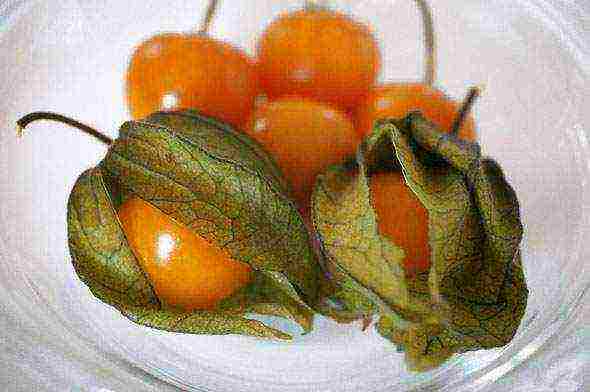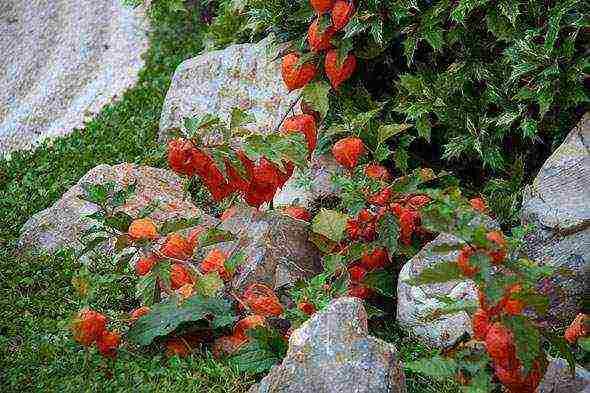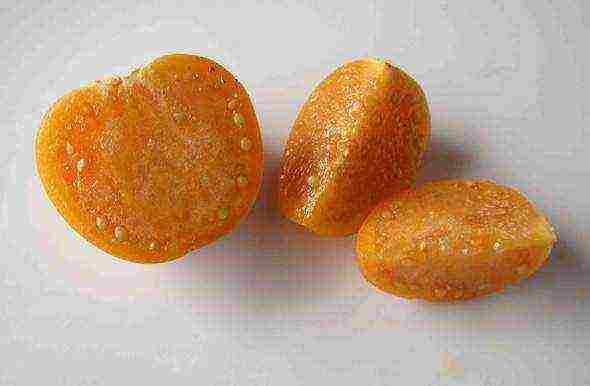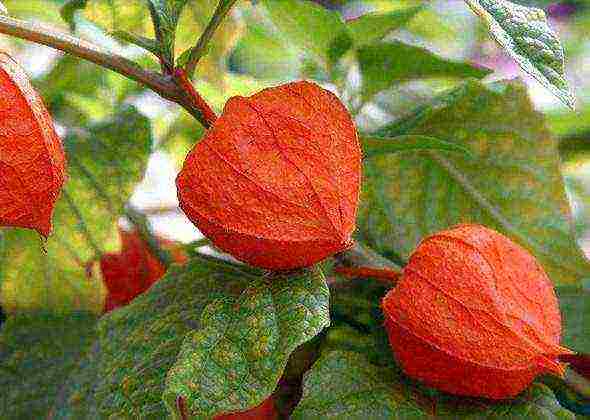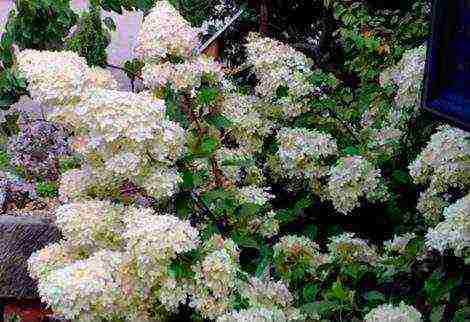Content
Garden plants are usually divided into two types - edible and decorative. However, there are examples of combining excellent decorativeness with a pleasant taste. In this case, we will focus on strawberry physalis. Yes, yes, a relative of that very decorative physalis, which we all used to call a Chinese lantern. You can not only admire it, but also eat its fruits.
Physalis strawberry - what is it?
Annual frost, Cape dwarf gooseberry, strawberry tomato, Barbados physalis - all these names are assigned to the same plant - the hero of our story. An annual self-pollinating plant that can be grown with equal success both in the garden area and on the windowsill is an excellent choice for those who like to plant something unusual.
By the way, gardeners often prefer to try something completely exotic and complex, while there are much more attractive and easy-care options. Probably it's time. Physalis is only gaining popularity, and interest in it is only growing.
In height, it grows up to 35-40cm, its stems either spread or are raised above the ground. On the bush, berries ripen with a diameter of 6-12 mm and weighing from 3 to 5 grams. The orange color of the fruit reminds us of either persimmon or tangerine, in general, it evokes only positive emotions. They intensify when you inhale the pleasant strawberry aroma of the fruit and taste it, by the way, sweet. But unripe fruits taste more like nightshade. Ripe berries are often used for jam, which has an unusual taste. Another use is drying to a raisin state.
Photo gallery of strawberry physalis
Physalis at home
Physalis has one feature, because of which it is necessary to grow it only in seedlings. This is the growing season of 100 days. Considering that in the three summer months there are fewer days in aggregate, and in May, as well as in September, one cannot rely unconditionally in terms of warm weather, then a plant planted with seeds straight into open ground will most likely freeze out.
Strawberry Physalis seeds are the best way to breed this plant
Purchasing strawberry physalis seeds is not that difficult. It is, of course, not as widespread as cucumbers and tomatoes, but nevertheless it is not included in the number of particularly exotic and rare crops either. For him, soil is purchased for tomatoes or peppers. The seeds are placed in a cotton and gauze bag and placed in a saturated pink solution of potassium permanganate for twenty minutes. This is followed by transfer to Epin's solution for twelve hours. The drug should be taken two drops per 100ml of cool boiled water. The seeds are then dried until they begin to separate easily.
The best time for this is March. No need to sow seeds deep. For planting, the land will need to be compacted and moistened. The seeds are laid out on top and sprinkled with fresh loose soil 1 cm thick, which is also slightly compacted.
It is best to sow seeds in cassettes and cover with glass to ensure better germination. They are placed in a warm place, and once the seedlings are germinated, the glass can be removed and ventilated.
Now physalis will need to be grown in the light, periodically and moderately watering it with lukewarm water. The best temperature for growing seedlings is + 20 ... + 22 degrees.
Given the natural and weather conditions of our latitudes, strawberry physalis can only be grown through seedlings. The only exceptions are the southern regions.
Seedling care
After a while, 3-5 leaves appear on the plants. At this time, it is time to dive them into peat pots, dropping them to the first leaves. At the same time, there is a rejection of not germinated and weak seedlings that are lagging behind in development. Their number is often quite large. You also need to take into account that with a lack of lighting, as well as an elevated temperature, the seedlings will stretch.
After picking, the plants are fed with complex fertilizer for vegetable seedlings. Seedlings are well watered two to three times a week.
In April, when the weather is warm, the seedlings begin to harden. They are taken out into the street in the daytime, taking them back to the house at night. A cold-glazed balcony is best suited for hardening, where the temperature is slightly higher than the outside temperature, and hardening will occur gradually. At first, it is worth leaving the plant for a couple of hours, gradually increasing the time spent outside.
The first time after transplanting into open ground, strawberry physalis will need to be kept under a film cover
In early or mid-May, plants are planted in the ground under a film shelter. Usually by this time the plants are 40-50 days old. If the seedlings are elongated, they need to be positioned at an angle.
An important point - as a member of the nightshade family, physalis does not like excessive moisture, therefore, during the growing period under the film, do not create excess water when watering.
Outdoor cultivation
The place where the physalis will grow must be prepared in advance. Humus, compost, stale manure, peat or ash are introduced. Organic fertilizers are replaced with complex mineral fertilizers. If the soil pH is below 4.5, liming is necessary.
The landing site is chosen either open or in partial shade. It is good to plant physalis where previously cucumbers, legumes, cabbage and various root vegetables grew.
The first time Physalis needs to be fed during the flowering of plants, which is massive at this moment. The second time is when the fruits are formed, and the third is after two to three weeks. For feeding, mineral fertilizers are used: ammonium nitrate - 10 g, superphosphate - 10-15 g, potassium salt - 10-15 g, all this is diluted in 10 liters of water. The solution is used at the rate of 10 liters per square meter. Other top dressing options are slurry in a ratio of 1:10 and bird droppings - 1:15. These solutions are poured half a liter for each bush.
Strawberry Physalis looks beautiful and tastes good
Physalis is planted in open ground according to the 30x30 scheme using the transshipment method.
Systematic watering is carried out until mid-August, then watering is reduced, thereby accelerating the process of fruit ripening. Physalis is quite tolerant of heat and drought, in hot weather it is watered twice a week, and in the presence of average rainfall and moderate temperatures - once a week. In addition to watering, periodic feeding, loosening and hilling of the crop are carried out.
Fruit picking
Since the physalis fruits ripen gradually, they can be obtained before the onset of the first cold weather. The scattered berries do not lose their properties and are just as good for consumption. If the entire crop does not have time to ripen before frost, it is worth collecting it and transferring it to a warm room, where it will ripen. In addition, it is practiced to dig up physalis and hang it by the roots in the barn. In this case, the fruits will also be able to ripen.
Strawberry Physalis fruits - small, with a sweetish unusual taste, good for jam
Growing physalis is not difficult in itself, in principle, like growing other nightshades.In addition, the plant is quite unpretentious, and if you have a window in your house facing the sunny side, you can grow strawberry physalis at home without fear of frost. With sufficient light, the fruit will grow as tasty and sweet as outdoors.
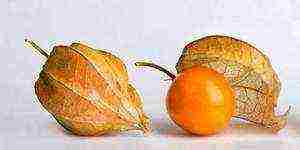 Physalis is a plant from the nightshade family, which is not widespread in our country. Most gardeners are sure that this is some kind of exotic plant growing in other countries. In fact, this culture is found in the wild nature of our country. In addition, she can be seen in summer cottages.
Physalis is a plant from the nightshade family, which is not widespread in our country. Most gardeners are sure that this is some kind of exotic plant growing in other countries. In fact, this culture is found in the wild nature of our country. In addition, she can be seen in summer cottages.
There are many types of this plant. Most of them are decorative, but there are varieties that actively bear fruit and their fruits can and should be eaten, since they have a good taste. Today we will talk about this plant, its types and features of growing and care at home.
What is Physalis?
The homeland of this plant is South America. It was actively cultivated by the aborigines. Thanks to them, it moved to North America. The plant got to Europe and Asia together with travelers. It reached Russia at the end of the 19th century as a domesticated plant.
Physalis is a typical perennial. More than 110 species of this plant grow in nature, and the vast majority of them are wild-growing. Only 4 species are considered domesticated. Moreover, only 2 of them have taken root in our country: vegetable and strawberry.
Vegetable grows up to 1 meter in height. Its fruits are green in color and weigh no more than 50 g. They are excellent for preservation, but they are not eaten raw.
The best varieties of vegetable physalis are:
- Kinglet.
- Moscow early.
- Large-fruited.
- Gribovsky soil.
Strawberry physalis is significantly lower than vegetable. Its height does not exceed 70 cm. The average height of the bush is 50 cm. It branches very strongly and is able to spread along the ground.
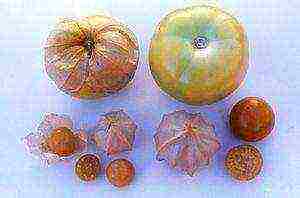 The fruits of strawberry physalis are much smaller than the fruits of vegetable. The size difference can be seen in the photo. They are yellow in color. On average, one berry weighs no more than 10 g. From the fruits of strawberry physalis, jam is usually cooked and raisins with an unusual taste are made.
The fruits of strawberry physalis are much smaller than the fruits of vegetable. The size difference can be seen in the photo. They are yellow in color. On average, one berry weighs no more than 10 g. From the fruits of strawberry physalis, jam is usually cooked and raisins with an unusual taste are made.
Also in our country you can often find decorative physalis. Summer residents love to plant this plant to decorate their plots, because its bright red and orange fruits, similar to Chinese paper lanterns, look great on flower beds. Examples of the use of physalis in landscape design can be seen in the photo. Physalis is grown at home as an annual plant. For this reason, it is propagated mainly by seeds and cuttings.
Useful properties of fruits
In the homeland of physalis, its fruits were used by local residents in traditional medicine recipes. The Indians have empirically established that this plant able to drive bile, relieve pain and lower body temperature.
Today, the fruits are used in traditional medicine. for the prevention of kidney stones and as a diuretic... In addition, with their help get rid of stomach colic.
Plant fruits rich in vitamin C and contain large amount of organic acids... According to these indicators, they surpass other fruits of other plants belonging to the Solanaceae family.
Physalis is very much appreciated by confectioners. The point is that it contains large amount of pectin... Confectioners use it to create various jelly-like fillings in candies. In addition, in the confectionery industry, citric acid is obtained from the fruits of this plant.
Finally, some types of physalis contain persistent organic dyesused in textile production.
Physalis photo
Growing physalis strawberry
Berry physalis can be grown at home in several ways: self-sowing, seeds and seedlings... Most often, they resort to propagation of this plant by seeds.This is due to the simplicity of this method and the good survival rate of the planting material.
Seed preparation
Seeds should be harvested at the end of fruiting, when they become darker and begin to crumble. To ensure the rapid ripening of fruits and seeds, you can pinch the tops of the stems at the beginning of September. Because of this, the plant will stop spending resources on their development. The released forces will be directed to the formation of fruits.
Sometimes frosts come too early, which prevents the seed from ripening. You can solve the problem by transferring the plant bush to a dry and warm room. There you just need to hang it up and wait for the harvest to ripen.
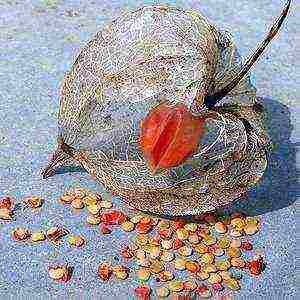 It is not necessary to specially collect seeds from a ripening bush. As they ripen, they themselves will fall to the floor. The only thing to avoid damaging them is to lay a soft cloth on the floor. At home, seeds ripen in a few months.
It is not necessary to specially collect seeds from a ripening bush. As they ripen, they themselves will fall to the floor. The only thing to avoid damaging them is to lay a soft cloth on the floor. At home, seeds ripen in a few months.
Physalis seeds are usually planted in the spring. Therefore, their preparation should begin in December.
To get started, the gardener needs to soak the harvested seed in a saline solution. To prepare the latter, you need to dilute 1 tablespoon of salt in a quarter of a liter of water.
Soak allows you to discard dead, damaged or diseased seeds. They will quickly find themselves on the surface of the solution. After culling, the selected seeds must be washed with running water using a sieve, and then sent for drying.
A couple of days before planting, seeds of berry physalis disinfect... Usually, they are alternately treated with fungicidal preparations, growth stimulants and a weak solution of potassium permanganate.
If the cultivation of physalis will be carried out from seedlings, then the seeds must be sown after April 15.
It is best to sow physalis seeds directly into the open ground in the spring after the threat of frost has disappeared or in the fall, when the frost has not yet come.
Choosing a place for planting seeds and seedlings
Growing physalis at home should not be carried out in the same areas where tomatoes and potatoes once grew. It's all about the high risk of common nightshade diseases. But growing physalis in the beds where cucumbers or cabbage used to grow is a reasonable decision.
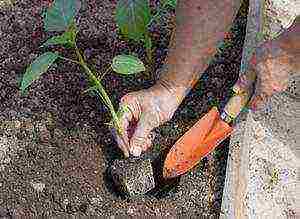 Physalis yield and fruit taste largely depend on the place of planting. It must be well lit.
Physalis yield and fruit taste largely depend on the place of planting. It must be well lit.
It can grow in any soil, but thrives best in light soil. However, any soil can be made light.
To do this, add rotted compost, peat and cleaned river sand to it.
Sowing seed in open ground
Physalis resists negative climatic influences well. Therefore, it grows well from seed in both autumn and spring. However, by following the following planting rules, the gardener will be able to increase the number and quality of seedlings:
- Sowing seeds should be carried out to a depth of no more than 1.5 cm.
- Do not place seeds too close to each other. With frequent planting, young plants will not be able to grow upward.
- There should be a distance of no more than 50 cm between the seed beds.
- Temperatures from 15 to 17 ° C are considered favorable.
- To protect the plants in the first weeks after planting, they should be covered with foil overnight.
- In spring, seeds can be planted only after the soil warms up to 7 ° C at a depth of 10 cm.
After the first shoots appear, they must be thinned out so that there is at least 30 cm of free space between the plants. After some time, you need to carry out a second thinning. This time, you need to ensure that there is at least 60 cm between the physalis bushes.
If everything is done correctly, then even without using seedlings, the gardener will receive strong plants that delight with a rich harvest.
Growing physalis from seedlings
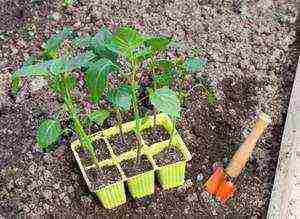 Growing seedlings is best done in pots. These can be ordinary containers for home flowers.
Growing seedlings is best done in pots. These can be ordinary containers for home flowers.
When growing physalis from seedlings, sowing seed is best done in early April. In this case, the seedlings will be ready for planting in open ground. Physalis seedlings are usually planted in open ground in mid-May.
Before planting seedlings, the soil on the site should be prepared in a special way:
- Remove weeds.
- Loosen thoroughly.
- If necessary, add peat and rotted compost to the soil.
When planting seedlings, the following rules must be observed:
- Before removing the seedling from the pot, the soil in it must be thoroughly moistened. This will allow the plant to be removed without damaging the root system.
- Strawberry physalis should be planted so that there are no more than 10 seedlings per 1m2.
- To prevent the plants from stretching in height, you can plant a radish or salad between them.
- It is better to transfer seedlings to the ground at sunset. This ensures that the delicate leaves are not damaged by the sun and the seedlings take root faster.
- Unlike other horticultural crops, physalis does not need to be watered immediately after planting. Excess moisture will restrict air access to the root system.
If you follow all these recommendations, then you can get a good harvest not only in the garden, but also when growing this plant on the balcony, as evidenced by the reviews.
I heard a lot of good things about physalis and even saw it on TV, but I never grew or tasted its fruits. Therefore, when I saw the seeds of berry physalis in the store, I immediately bought it.
I don't have my own dacha, but I have a balcony. I decided to grow strawberry physalis on it. For this I asked my husband to make two long wooden boxes. I poured soil into them, prepared in accordance with the recommendations, and planted seeds in it in compliance with all the rules. After that, she provided the plants with proper care.
As a result, I got a good harvest of bolls from dry leaves. Inside each of them was a yellow berry, slightly smaller than a cherry tomato. The taste of these fruits is very similar to the taste of strawberries: the same sour-sweet.
In the first year, my husband and I ate the entire crop just like that. In the second year, we made jam from berries of amazing taste according to a recipe found on the Internet. In the future, I plan to grow not only strawberry, but also vegetable physalis. They say it is even more useful.
Marina, Rostov-on-Don
Strawberry Physalis Care
Wherever physalis is grown, caring for it remains unchanged. The main task of the gardener is to closely monitor the condition of the garden. It is very important to notice the diseased plant in time and prevent further spread of the disease. Experts do not recommend treating diseased bushes. This is not rational. The diseased plant must be dug up and burned.
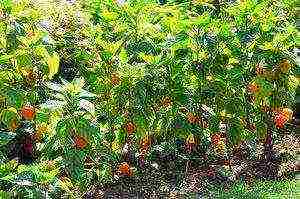 Caring for physalis in the open field involves regular feeding with liquid fertilizers. The first time the plant should be fed during the period when the first flowers appear. The second and third time, with a time difference of 20 days, fertilizers are applied to the soil during the formation of fruits. For each plant during the year, you will have to spend at least 500 ml of liquid mineral fertilizers.
Caring for physalis in the open field involves regular feeding with liquid fertilizers. The first time the plant should be fed during the period when the first flowers appear. The second and third time, with a time difference of 20 days, fertilizers are applied to the soil during the formation of fruits. For each plant during the year, you will have to spend at least 500 ml of liquid mineral fertilizers.
Care also includes timely watering. Typically watered no more than 2 times a week, but in a particularly hot period, the frequency of watering can be increased up to 4 times. With the onset of autumn, the soil around the plants should be moistened no more than 1 time per week.
Harvesting
If the rules for caring for this plant have not been violated, then it will give its first fruits in July. Harvesting can begin at the moment when the leaves of the fruit pods lose their bright color and begin to dry out... At this time, the pleasant smell of ripe fruits begins to spread over the beds with plants.
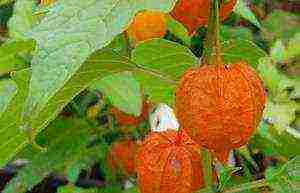 For long-term storage, not only those fruits that were plucked from the branches of the plant, but also those that fell to the ground, are suitable. But there is an exception: you cannot pick up fruits from the ground that have been hit by frost. They will not lie.
For long-term storage, not only those fruits that were plucked from the branches of the plant, but also those that fell to the ground, are suitable. But there is an exception: you cannot pick up fruits from the ground that have been hit by frost. They will not lie.
When frosts come too early and the fruit pods do not have time to ripen, then Physalis bushes need to be dug up together with the roots and transferred to a dry and warm room... There they will finally ripen in a couple of months and can be used for food.
Conclusion
Physalis is a very useful and beautiful plant, undeservedly ignored by domestic gardeners. Its cultivation and care does not cause serious trouble. We can only hope that thanks to the articles on the Internet, more and more gardeners will be interested in strawberry physalis and this culture will receive a well-deserved distribution in our country.

Like most fruiting nightshade crops, physalis came to us from the Western Hemisphere. It is there that the greatest variety of species of this plant is observed. In nature, this plant is quite unpretentious; in warm and temperate climates, Physalis grows like a perennial. Many people are engaged in growing physalis and caring for it at home, since its fruits have wonderful properties, from medicinal to culinary.
Content:
Description 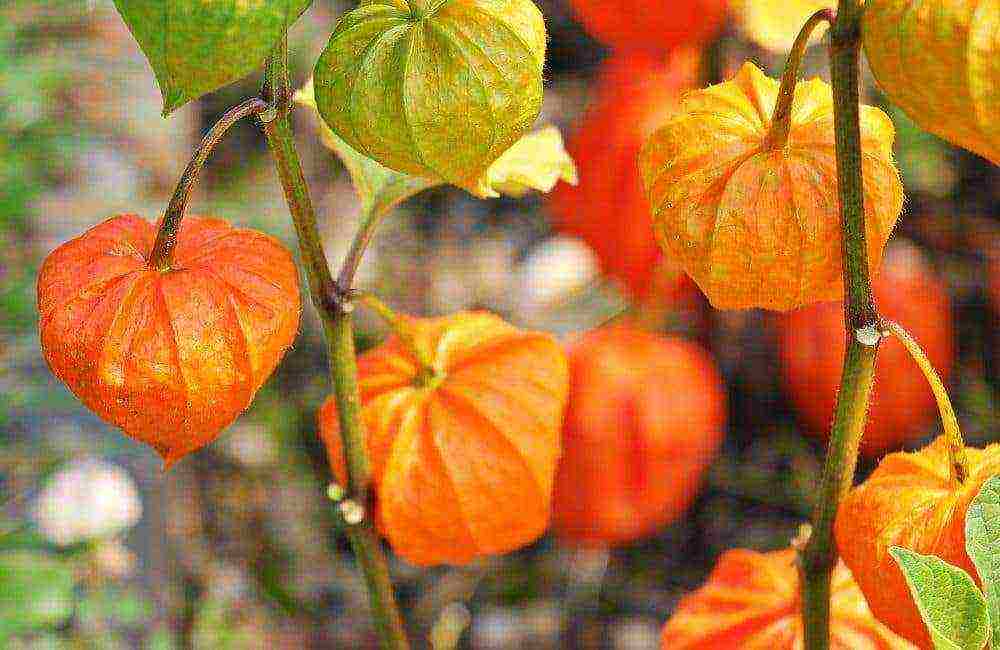
Ripening fruits of decorative physalis
In fact, the Physalis genus is the largest genus of the Solanaceae family, as it includes more than one and a half hundred species, however, almost all of them grow in Brazil, Mexico and Peru. In the climate of Europe, there are only three types of physalis: physalis ordinary or decorative, vegetable physalis and strawberry physalis. The fruits of the first are poisonous due to the high concentration of corned beef in them, the remaining two can be used for food, having properties similar to tomatoes.
That is, physalis is actually a small cold-hardy tomato. In many languages of the world, it is called "Mexican tomato".
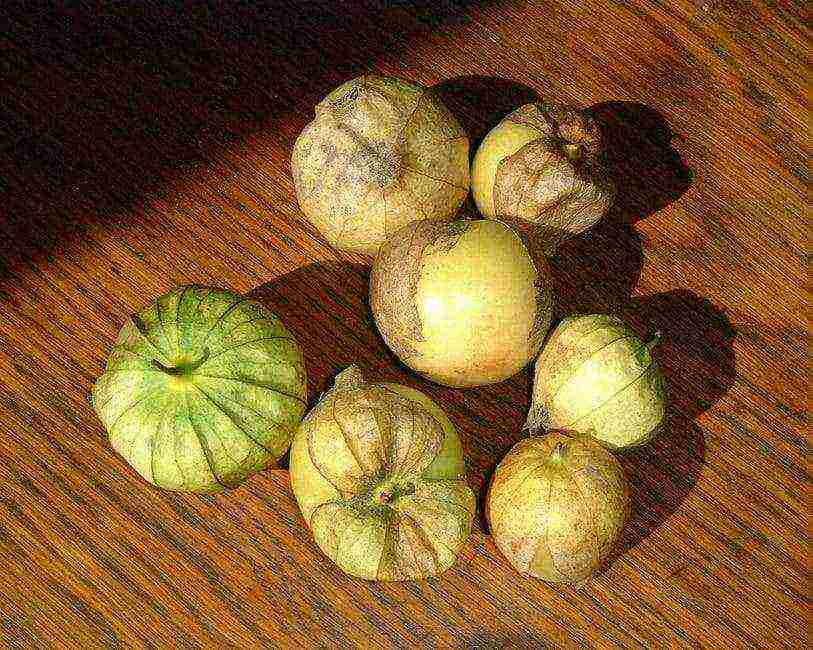
Physalis vegetable fruits
For the characteristic shape of the bolls of ripening fruits, physalis are called "Chinese lanterns" and are very often used not as food, but as ornamental plants. The sight of the ripe physalis fruit, located in the center of the veined pods, always attracts attention.
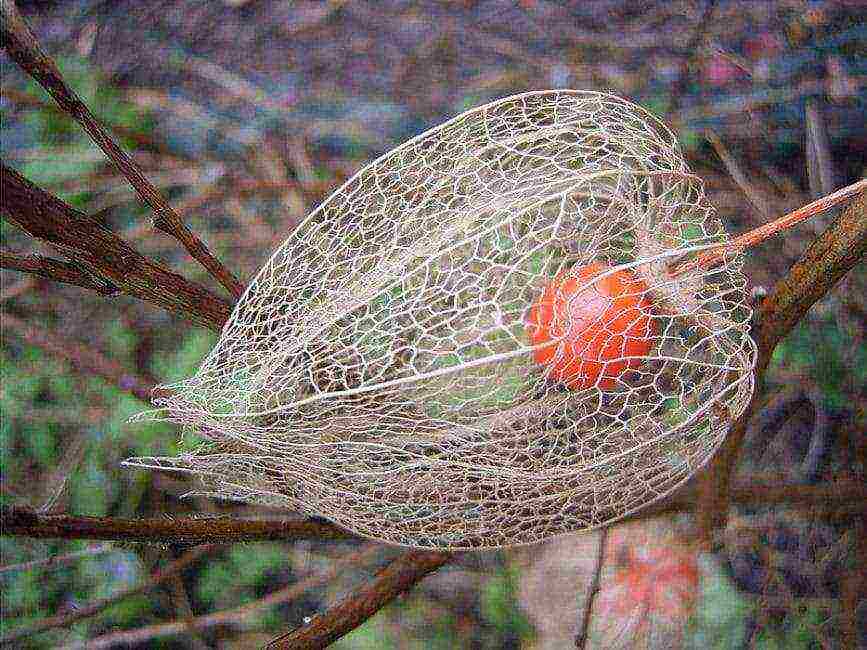
Ripe physalis fruit without the integumentary tissues of the outer shell
The branches of vegetable physalis bushes are able to rise to a considerable height and completely braid sufficiently large areas on which nets or trellises are installed.
back to menu ↑ Biological description
As a member of the Solonov family, physalis has adopted many of the properties characteristic of it. In particular, the plant has a not very strong stem, which does not allow it to grow straight and support several kilograms of fruits on itself, however, if there are possible supports, the plant is able to grow upward, braiding them. If there are no supports, the length of the stems rarely exceeds 60-70 cm.
The leaves of the plant are quite large, up to 12 cm in length and 6 in width, the flowers are mostly white, consisting of 5 petals. A characteristic feature of the physalis flower is the transformation of the calyx into the outer shell of the fruit., the one that looks like a Chinese lantern. Its size can significantly exceed the size of the fruit itself and even be larger than a chicken egg.
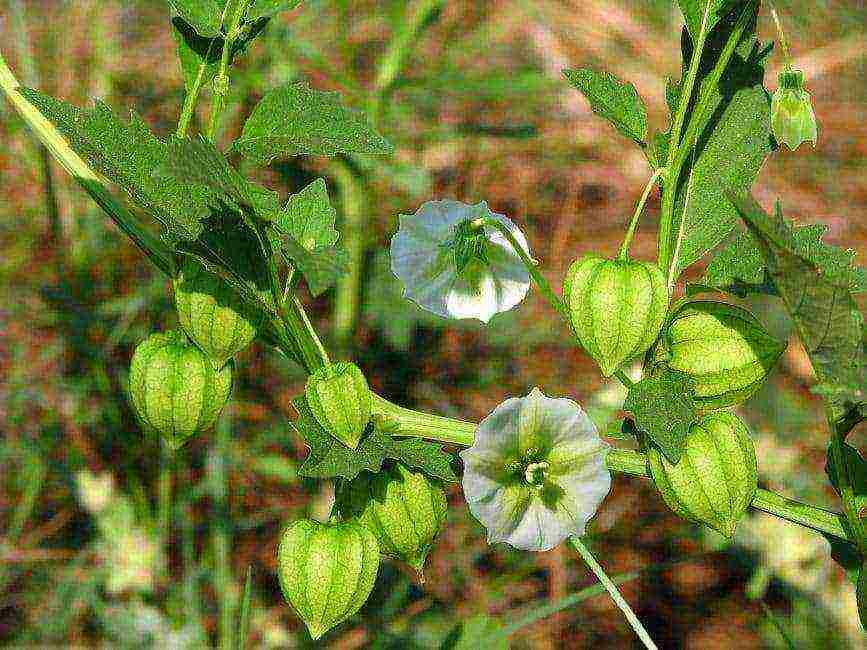
Physalis bloom
On one short stem, there can be up to two dozen fruits, on the stems artificially tied or fixed on the supports of the fruits even more. The size of the fruit depends on the variety and ranges from 5 to 7 cm. Physalis yield can reach up to 5 kg per plant.
Consider the types of physalis presented in our climate:
back to menu ↑ Physalis ordinary
Other names for this species: garden or wild. The original form of the plant, imported from South America. Traditionally considered a wild form, due to the inedible fruits and their small size. However, it is believed that in fact, in our climate, it simply does not have time to fully form its fruits, since it does not have enough light and heat.
On the other hand, of all the species of physalis growing in our latitudes, this one is the most cold-resistant, and in the southern regions it is actually a perennial. In many places, the plant is not even cultivated, but grows like a weed, multiplying and spreading by self-seeding.

Physalis wild with a lot of fruits, grown in natural conditions
Basically, this species is used to compose various floristic compositions, since its fruits have the most attractive and extravagant appearance in comparison with other varieties.
back to menu ↑ Strawberry Physalis
Another name for the plant is strawberry tomato or dwarf gooseberry. A low-growing plant with small fruits. It belongs to the Peruvian group of varieties that have appeared relatively recently.
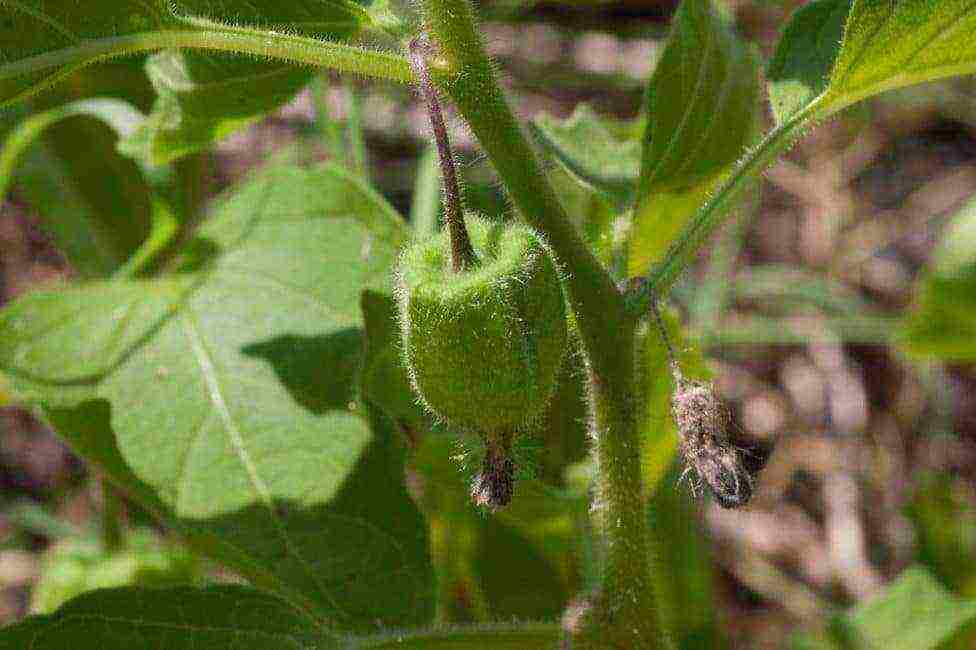
Strawberry Physalis
The most thermophilic species of allpresent in our climate, but despite the fact that its fruits are tastier than that of vegetable physalis, did not receive much distribution.
back to menu ↑ Vegetable physalis
Less cold-resistant species than ordinary, but capable of tolerating slight frosts. In our area, it is an annual. It is considered a cultivated species, the actual fruits of which are used by humans.
Belongs to the Mexican group of Physalis, whose representatives were cultivated several thousand years ago. Due to sufficient cold resistance, it is planted in the ground several weeks earlier than the tomato.
It is more resistant to diseases and pests of nightshades. Shows good resistance even to such a "nightshade killer" as late blight.
This species is cross-pollinated, which makes it possible to engage in its selection, although there is practically no significant and fundamental work in this direction. Similar to the usual one, by the fall, the pods of its fruits become bright orange or red.
The fruits themselves have a slightly different shade - they are predominantly pale yellow in color, although there are exceptions. The main difference between ordinary physalis and vegetable is the much larger size of the fruits of the latter.
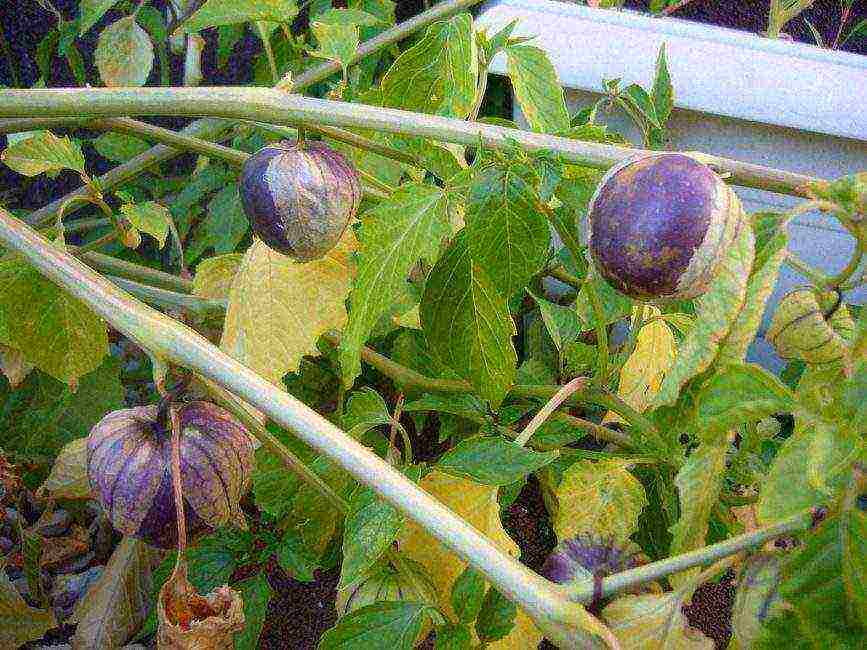
Purple form of vegetable physalis
It is the vegetable physalis that can grow on stretchers and supports up to 2 meters in height. It all depends on how you care for the plant. However, even without any care, the plant can reach a height of 1 meter.
The Mexican tomato, which is the most widespread in Europe, has several dozen varieties, the most common of which are:
back to menu ↑ Early Moscow variety
It is a plant with a harmful degree of branching, with predominantly recumbent stems. The foliage has an elongated oval shape, its color is light green. Flowers are distinguished by the presence of brown spots on a white-yellow background. The calyx covers the fetus almost completely.
Fruits are usually round in shape, their diameter is 40-50 mm, weight is about 60 g... Unripe green fruits that turn yellow as they ripen; sometimes ripe fruits have a yellow-amber hue.
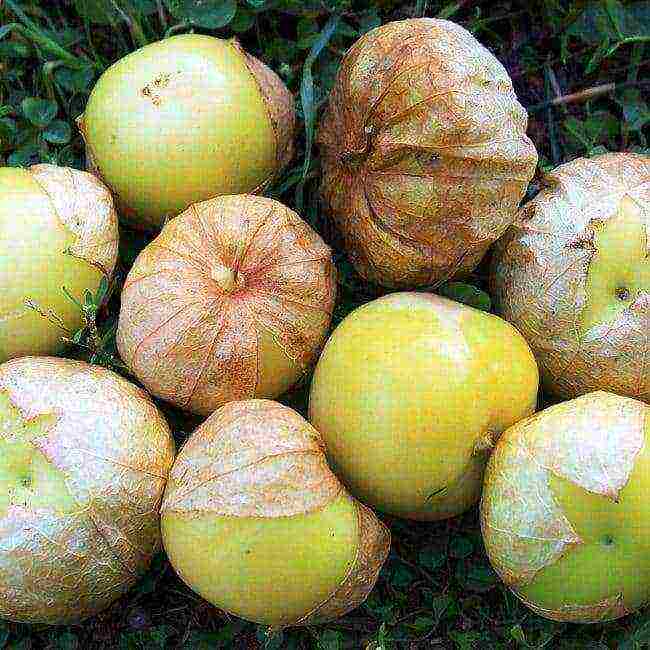
Fruits of the Moscow early variety
The fruits of this variety have a sweet taste.... The sour taste characteristic of many other varieties of vegetable physalis is practically absent. Ripens relatively early - early or mid-summer. The yield can reach 5 kg per sq. m.
back to menu ↑ Gribovskiy soil grade
Despite the name, it is a relatively tall plant that grows without supports up to 80 cm in height... The leaves are dark green and oval in shape. The leaves are smooth to the touch. Flowers with uncharacteristic green color, covered with light brown spots.
The capsule, which contains the fruit, covers it entirely. Veins are dark green, sometimes brown. The fruits themselves, even when ripe, are green. Fruit weight can reach 60 g.

Fruits of the Gribovsky soil variety
The fruit tastes sweet and sour. Refers to cold-resistant varieties, can be stored for a long time. Productivity from 3 to 5 kg per sq. m.
back to menu ↑ Confectionery grade
Created relatively recently, specifically for the needs of the confectionery industry. It is a plant with branching and spreading stems. The leaves are dark green in color. Flowers, fruits and capsules are light green. Fruit weight 50-60 g.
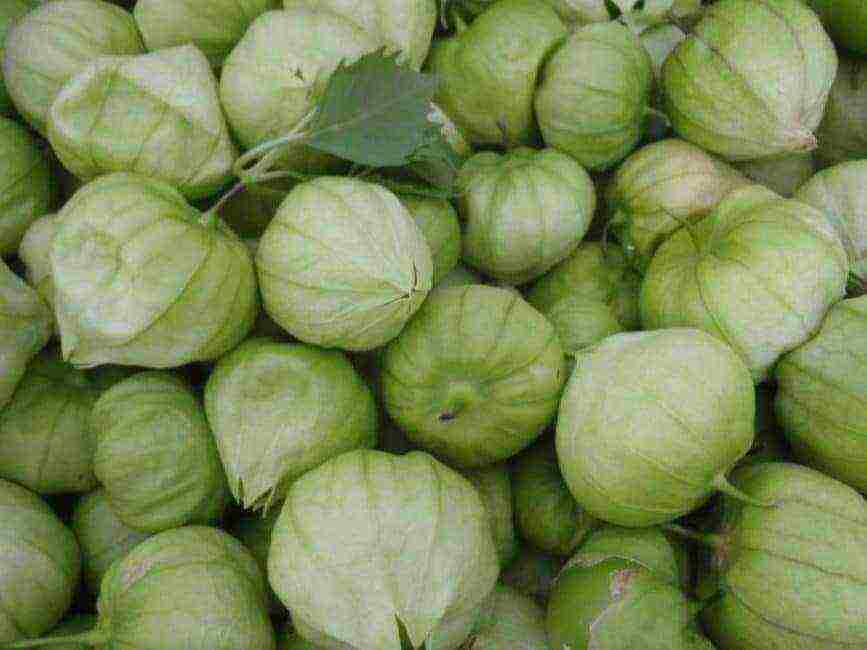
Confectionery grade
The taste is sweet and sour, the fruits can be stored for a long time. Differs in a high content of jelly-like substances.
back to menu ↑ Growing a plant
In our climate, Physalis vegetable is grown using seeds. They have good germination even at temperatures from + 10 ° C. The plant is very unpretentious and practically does not need care.
It is believed that when planted directly into the soil, the yield is slightly higher than with a seedling growing method.... This is primarily due to the fact that plants planted in this way do not lose part of the root system during picking and transplanting. The only advantage of the seedling method of growing is the earlier harvest time.

Physalis in the garden
On the other hand, with the correct organization of seedlings, and using separate containers (for example, peat pots), such troubles with the root system can be avoided. However, few people will tinker with physalis seedlings, planting each plant individually.
Consider growing a plant when planted in open ground:
back to menu ↑ Site selection and preparation for sowing
Physalis prefers sunny areas where there is no stagnant water. The acidity level of the soil is, in principle, not important for him. But still, it is not recommended to grow a plant on very acidic soils (pH less than 4.5). Such soils must be limed.
As a predecessor of physalis, there can be any culture, except for nightshades. It is not advisable to grow physalis in the place where potatoes, tomatoes, eggplants or peppers were grown. It is also not recommended to grow physalis in the same place where it grew last year. Re-sowing after all of the above crops is possible only in the 4th year.
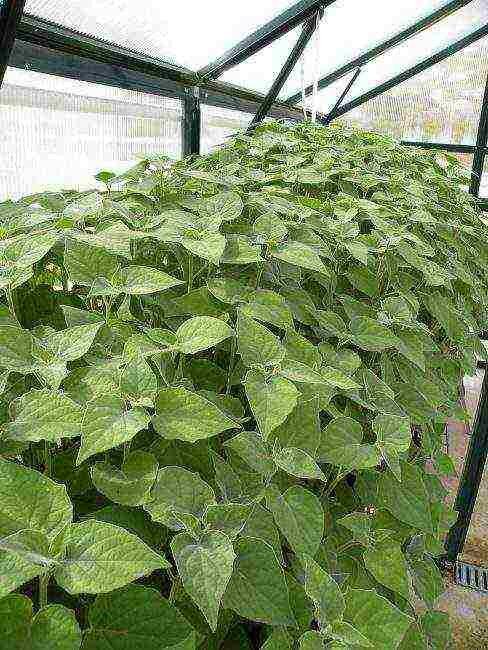
Growing physalis in greenhouse conditions
The soil should be sufficiently fertile and well ventilated. Therefore, in the fall, the site must be dug to a depth of about 30 cm, having previously fertilized it with rotted manure or compost. The application rates for these organic fertilizers should be approximately 30-40 kg per 1 sq. m.
In the spring, before re-digging the site, mineral fertilizers are applied to it. It is necessary to apply fertilizers containing phosphorus and calcium in the amount of 15 m 40 g per 1 sq. m respectively. The site is re-dug to the same depth as in the fall 2-3 weeks before planting seeds or planting seedlings.
back to menu ↑ Preparing seeds for planting
Large and full-weight seeds are selected for plantingas they can give a higher yield. To select seeds suitable for planting, they are immersed in a 5% salt solution and mixed thoroughly.
After about 5 minutes, seeds that do not have the required mass float. They are thrown away, and the rest are washed with running water and used for planting.

Physalis seeds
Seeds are planted in open ground by mid-April. By this time, you need to prepare the seeds so that they germinate faster. To do this, they are soaked in warm water and kept in this way at a temperature not lower than + 20 ° C for a week. After this treatment, the seeds germinate about three days after planting.
Immediately before planting, the seeds are treated in a 1% solution of potassium permanganate, in order to disinfect them from fungal diseases and viral infections. Physalis is vulnerable to the tobacco mosaic virus, therefore, after washing in potassium permanganate, it must also be washed in a 20% hydrochloric acid solution.
Planting is carried out in the ground to a depth of about 1-2 cm. Seeds are planted in small holes at a distance of 30-50 cm from each other. Several seeds are placed in each hole. It is not worth over-thickening the planting, since the plants will begin to stretch out strongly. Sometimes sand or seeds of other plants, such as radishes, are added to the holes for a more even sowing.
The latter also act as a lighthouse culture - since physalis may not germinate quickly in the cold season, the sprouts of radish that have hatched will indicate exactly the planting site and will act as an indicator of the first work on loosening the soil.
When the physalis sprouts hatch out of the ground and germinate enough, they are thinned out so that the number of plants per 1 sq. m did not exceed 4 pieces... Usually, the strongest and largest plants are left, or those that have the maximum number of leaves.
back to menu ↑ Growing physalis seedlings
Seedlings can be grown both indoors and in special greenhouses; sometimes they practice growing in greenhouses in the beds, with a cover for them with a film. The soil mixture for planting can be of any composition, it is best to choose the one that is used when planting tomato seedlings.
Physalis seeds are sown to a depth of about 1 cm. The distance between the seedlings should be 5-6 cm. After planting, watering is performed. The required temperature for the normal germination of seedlings is about + 15-17 ° C.
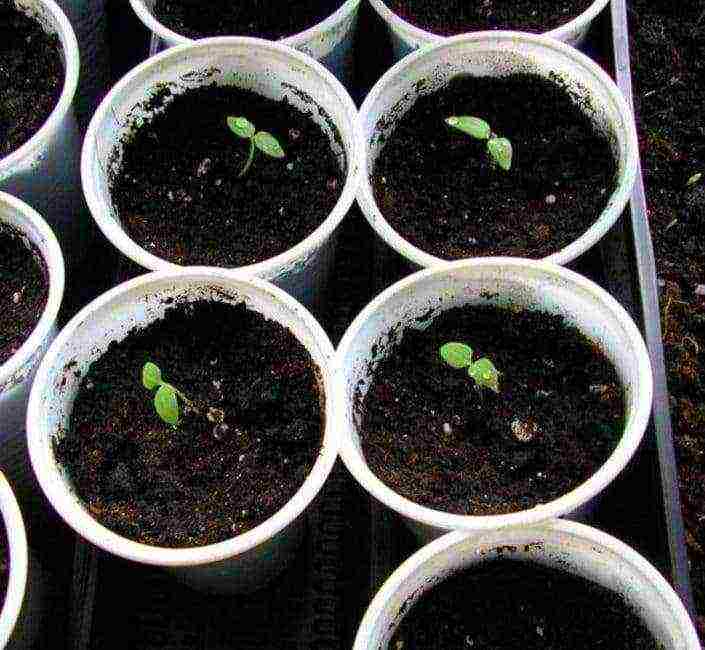
Seedlings one week after planting
As soon as the plant has two leaves, the seedlings are dived and transferred to individual pots. 1 or 2 plants are transplanted into each pot. It is necessary to water the seedlings abundantly before this operation.
The pick itself is made using pointed stakes about 10 cm long and 1-2 cm in diameter. They need to make a hole in the substrate in a pot and carefully transfer the seedlings there with a small lump of earth, without damaging or filling the growth cone.
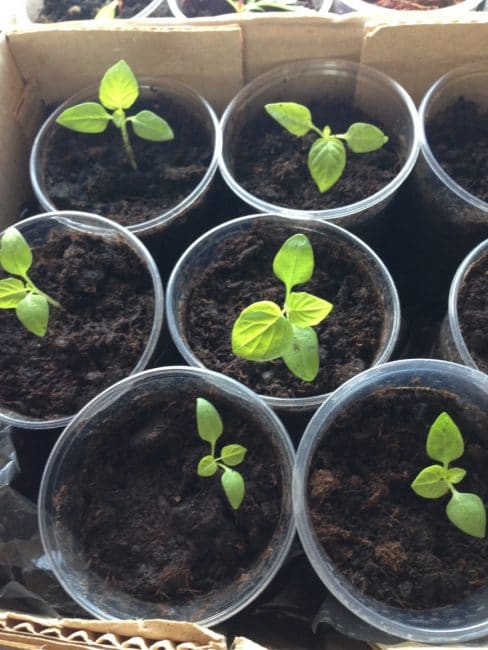
Seedlings after picking
Then the plants are placed in the same greenhouse. Seedling care at this stage is the most difficult operation., because it requires concentration and regularity of actions. The plant itself is unpretentious, but you will have to take good care of its seedlings.
By the time of planting in open ground, the first buds should already be present on the seedlings, and she herself should have at least 5-6 leaves. This corresponds to approximately 40-45 days after planting.
Seedlings can grow at temperatures of the order of 10-12 ° C, however, it will be better if it is accustomed to this temperature gradually, using the hardening method. Maintaining the temperature in the greenhouse about 15-17 ° C, every day during watering it is necessary to open the greenhouse for ventilation, accustoming the plant to the ambient temperature. After about a month, the seedlings can be safely left in the open air, however, in the event of a cold snap, it must be covered again.
Seedlings need top dressing every 15 days... The first feeding is done on the 10th day after planting and consists in adding ammonium nitrate (watering the plants with a solution of nitrate 20 g per 10 liters of water). It can be replaced with fertilizing with organic fertilizer, which is used as mullein or bird droppings. Fertilizers are diluted in water at a concentration of 1 to 10 or 1 to 15, respectively. A volume of 10 liters of such fertilizer is enough for watering seedlings with an area of about 2.5-3 sq. m.
The second feeding is carried out using potash mineral fertilizers... In this case, 10 g of ammonium nitrate and 15 g of potassium chloride must be diluted in 10 liters of water. With this solution, seedlings should be watered at the rate of 10 liters per 2 sq. m.
The third feeding of seedlings is carried out using superphosphate... For 10 liters of water, 30-40 g of superphosphate is taken, and the consumption rates in this case are already 10 liters per 1 sq. m.That is, in each subsequent feeding, the concentration of fertilizers increases approximately twice in comparison with the previous one.

Physalis seedlings a week before planting
After the third feeding, the amount of liquid during irrigation is approximately halved and remains so until the seedlings are planted in open ground.
back to menu ↑ Planting seedlings in open ground
Usually, the seedlings are transplanted at the end of May, about 1-2 weeks earlier than the transplanting of tomato seedlings. Immediately in the morning before planting, the seedlings are plentifully watered. It is necessary to mark in advance the area into which the disembarkation will take place.
The distance between plants should not be less than 30 cm, in addition, it is desirable to accommodate 1 sq. m no more than four plants of vegetable physalis. For strawberry physalis, this figure is 6 plants.

Planting too densely
Between the physalis plants, you can plant any other early ripening crops, for example, lettuce or radish.... This will help to more efficiently use the sown area, and the plants will not interfere with each other, since the harvest of auxiliary crops begins much earlier than that of physalis.
The disembarkation itself is carried out in the afternoon, but if the weather is cloudy, the beginning of the disembarkation does not depend on the time of day. The first watering after planting is not carried out directly under the root of the plant, and at some distance from it, so that an earthen crust does not form around the bushes.
If the soil is poorly drained or there is a high level of groundwater, it is necessary to use beds with a height of 30-40 cm for growing physalis, since the plant is very negative about excess moisture at its roots.
back to menu ↑ Plant care
Physalis as such does not require active care. Basically, when growing it, they are engaged in preventive measures, which consist in maintaining the plant and the site in normal shape, removing weeds, loosening the soil, making top dressing and making watering.
The frequency of watering under normal conditions is once every 3-4 days. Depending on the degree of soil moisture and precipitation, this period can be adjusted. It is not necessary to keep the soil moist all the time. Re-watering is carried out under the condition of gentle drying of the upper soil layer.
Solanaceous plants generally do not like excessive moisture, so it is better to dry the physalis even a little.
During the active growth of the green part of the plant, it is necessary to regularly loosen the soil, ridding it of weeds... Depending on the growth rate of the plant, it is necessary to apply top dressing under it. Usually, the first top dressing after the spring digging of the earth is done during the first flowering. The second is during fruit setting. The third feeding is carried out 15-20 days after the second.
In these cases, solutions of complex mineral fertilizers are used in an amount of 10 to 20 g per 1 sq. m.
You can make the mixture yourself, using the following composition of mineral fertilizers:
- ammonium nitrate - 10 g
- superphosphate - 10 g
- potassium salt - 15 g
All these components are dissolved in 10 liters of water and introduced into the soil at the rate of 10 liters per 1 sq. M. Just in case, to neutralize superphosphate when mixed with ammonium nitrate, about 1-2 g of chalk can be added to the solution.
Physalis is believed to require no garters or pinching.since this, they say, does not allow the formation of strong and resistant stems. However, this is not an immutable rule or dogma, since in growing any crop in a garden, it is not its appearance that is important, but its yield.
back to menu ↑ Recommendations for the protection of physalis from diseases and pests
Physalis, in comparison with tomato or peppers, is much less susceptible to any negative factors in the form of diseases or pests. However, the ease of caring for it can form the wrong opinion that no even preventive measures should be taken to protect it.
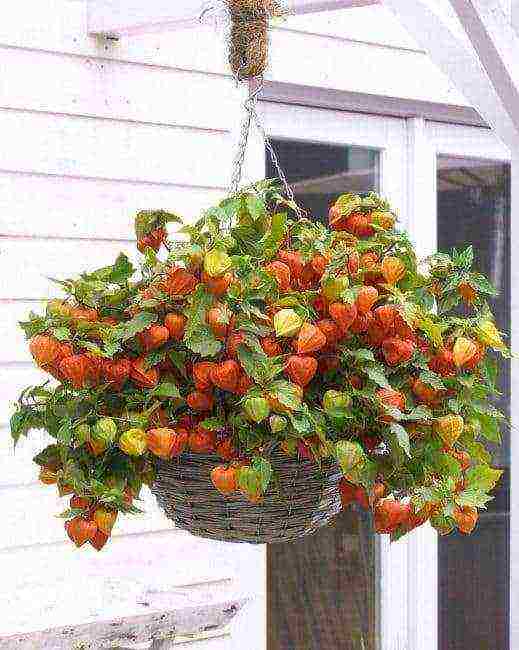
Hanging planter with physalis
Naturally, this is not the case. To prevent the spread of diseases and prevent pests from attacking the plant, it is necessary to follow a number of measures and apply specialized methods to prevent these factors.
The following measures will help to get rid of possible troubles when growing physalis:
- the harvesting of seed should be done exclusively from your site, only from healthy and yield-tested plants; cross-pollination with other areas is best avoided;
- seeds must be pickled before sowing;
- be sure to adhere to the crop rotation, correctly observe the alternation of followers and predecessors, in no case prevent the growth of nightshades in the same place without a break of at least three years;
- it is necessary to constantly deal with weeds and any pests;
- it is necessary to regularly remove plant residues from the growing area, since they can become a place for the appearance of the same mold or other fungi;
Using these simple tips will greatly protect physalis from possible problems in the form of diseases.
back to menu ↑ Physalis properties 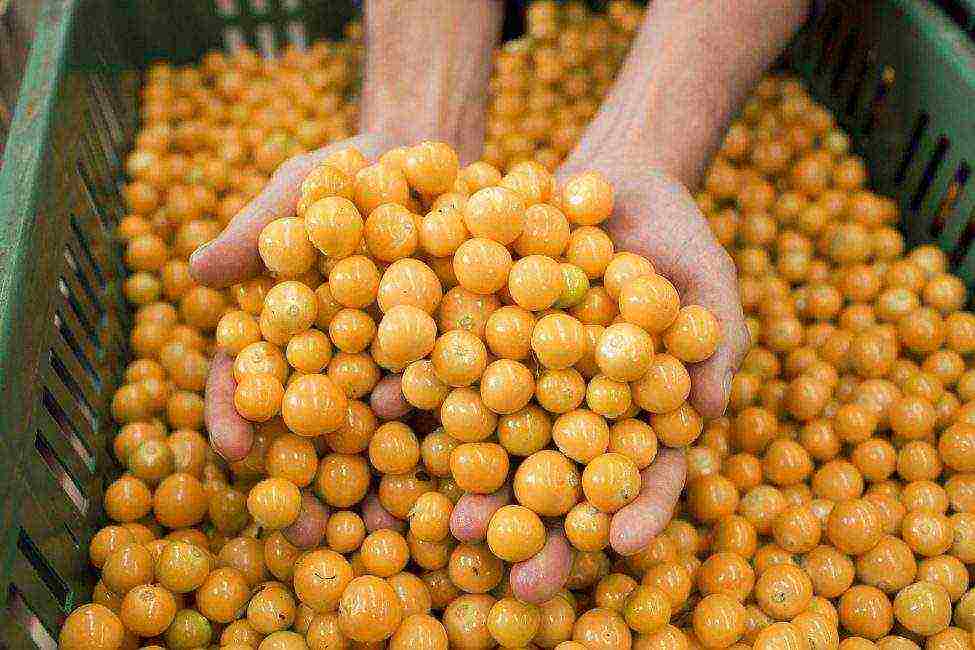
The plant has many useful properties that people have noticed for a long time.
It all began, naturally, with the nutritional and culinary advantages of physalis. However, later it turned out that this plant has other useful properties, mainly medical.
back to menu ↑ Culinary properties
Physalis is a low-calorie product, it contains only 30 kilocalories per 100 g of weight. Despite its relatively watery composition, physalis is rich in fiber and carbohydrates. Physalis fruits taste almost indistinguishable from tomatoes, but they have some peculiarities, for which they are appreciated by gourmets.
Physalis can be consumed both dry and processed... Its fruit goes into a wide variety of dishes, and not only analogs of those that include its closest brother, the tomato. These are soups, side dishes, and sauces. Physalis is also used as a filling in pies. Dried physalis is a very significant export item for countries such as Colombia and Mexico.

Dessert with physalis
In addition to the standard procedures for frying, stewing, baking and other things typical for tomatoes, in cooking, physalis is also used to make various confectionery products.: preserves, jams, candied fruits. This is explained by the fact that of all nightshades, only physalis has gelling properties.
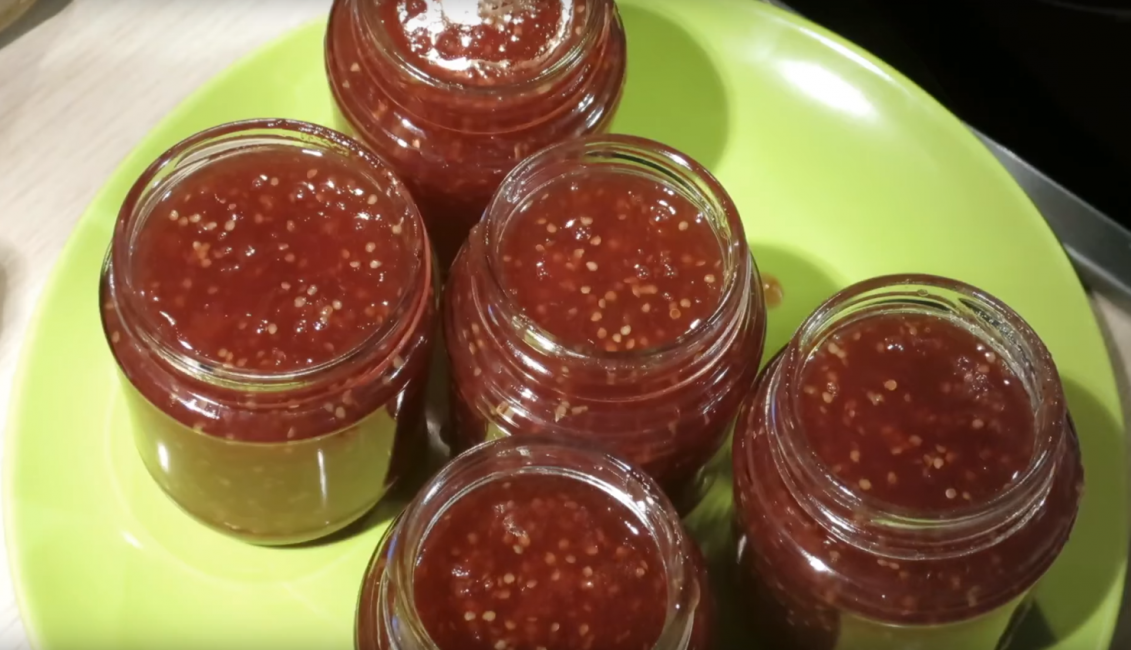
Making Physalis Jam
That is, in fact, the decorative Chinese lantern in cooking is even more common than the well-known tomato for a long time.... We are not talking about our cuisine, however, this plant is very popular in South and Central America.
In addition, dried and specially processed physalis is very similar in taste and appearance to raisins.... Such dried physalis is often used as a weight loss remedy. And also red and orange food colors are made from physalis.
back to menu ↑ Medical properties
The plant also contains vitamins A and C, as well as many organic compounds necessary for a person.
These include malic and citric acids, carotenoids and tannins. Physalis also contains the following trace elements: potassium (one of the highest concentrations), magnesium, phosphorus, iron.
All this determines the many ways of using physalis in medicine, both folk and traditional. In particular, due to the lycopene contained in it, which is a powerful antioxidant, the use of physalis in food is recommended for the prevention of cancer.
Physalin, contained in the fruits of Mexican tomato, is an excellent sleeping pill; in Mexico, there is a recipe for obtaining a sleeping drug from physalis, which has practically no negative consequences.
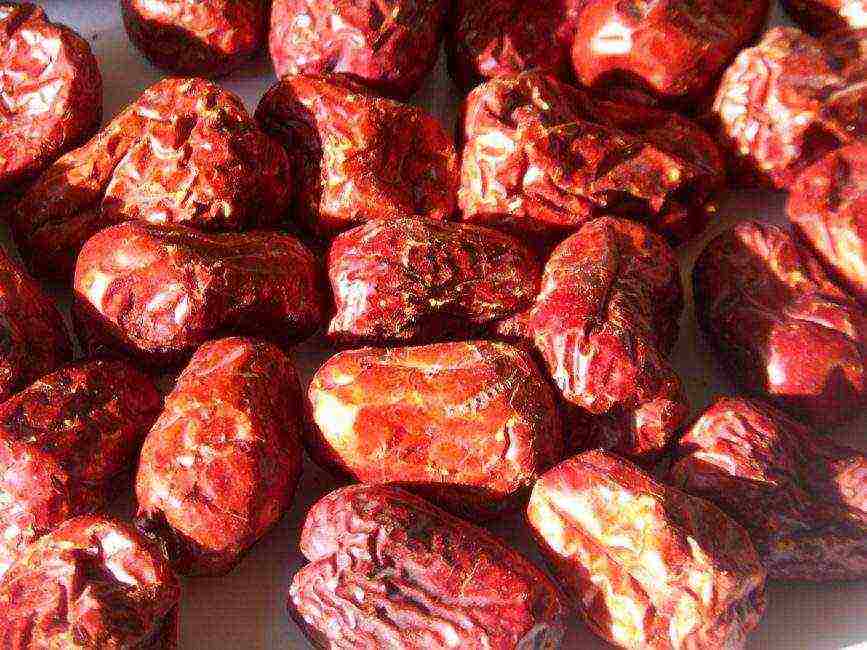
Dried Physalis Used in Traditional Medicine
In addition, the plant's medicinal uses include its use as a hemostatic, analgesic, and antiseptic. For example, in Central Asia, where physalis naturally came relatively recently, its decoction is used as a remedy for stomatitis and various injuries inside the oral cavity.And the pectin contained in the fruits is able to bind cholesterol with itself, facilitating the release of the latter from the body.
8.5 Overall Score
Growing physalis is a fairly simple task; it is within the power of even gardeners, whose experience is relatively short. The use of physalis is not limited to just a nutritional role. This is an excellent ornamental plant that has a variety of uses both in landscape design and in floristry. In addition, the fruits contained in Chinese lanterns are used in various countries in a variety of traditional medicine recipes. Try to grow physalis yourself, you will not be disappointed. Your opinion about this material is very important for us. If you disagree with these ratings, leave your rating in the comments with the reasons for your choice. Thank you for your participation. Your opinion will be useful to other users.
Relevance of information
8.5
Reliability of information
9.5
Add your review
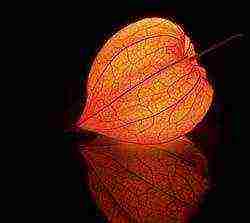 It is good both outdoors, in a vase, in a photo, and on a table. We are talking about physalis, the varieties of which are beautiful and edible. If you have not yet been involved in its cultivation and reproduction, it is never too late to start. Learn about planting and caring for physalis from the article.
It is good both outdoors, in a vase, in a photo, and on a table. We are talking about physalis, the varieties of which are beautiful and edible. If you have not yet been involved in its cultivation and reproduction, it is never too late to start. Learn about planting and caring for physalis from the article.
Physalis: varieties and varieties
"Strawberry tomato", "earthen cherry", "Chinese lanterns" - as soon as they do not call physalis! Growing and caring for it sometimes varies slightly, depending on the variety. In total, there are 3 large groups of these plants (the first two are edible):
- vegetable varieties (Confectionery, Large-fruited);
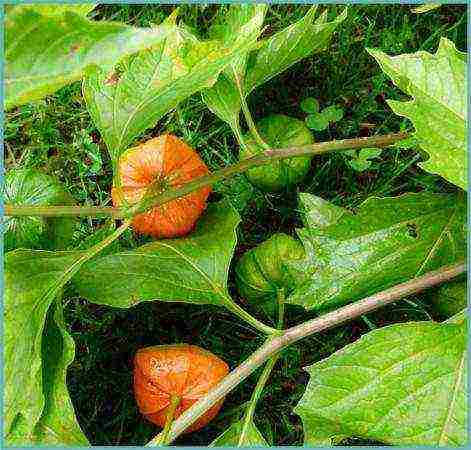
Physalis vegetable
- berry varieties (Peruvian, Strawberry);

Physalis berry
- decorative physalis resembling Chinese lanterns in boxes of yellow, orange and red colors (Franchet, Longifolia).
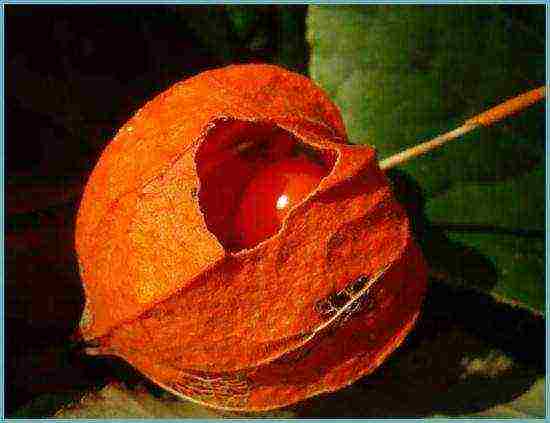
Physalis decorative
Advice. When growing physalis in the open field, do not combine different varieties in the same area. They can interbreed and, even with proper care, produce small and misshapen fruits.
Planting physalis
First, decide on the place where the physalis will grow. Planting and leaving involves the choice, if not of a sunny site, then at least partial shade, for example, under trees. If you plant in the beds, keep in mind: good predecessors for this culture are cucumbers, cabbage, legumes. Planting scheme - 4-5 plants per 1 sq. m.
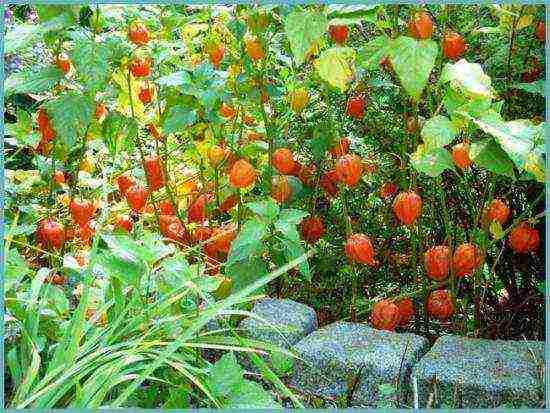
Physalis loves areas well lit by the sun
Sowing with dry seeds in late autumn is possible. Embed them in soil covered with compost or peat (2-3 cm layer). The fruits will ripen later, but the harvest will be richer. In addition, the plants will be more hardy.
Plant care
It consists in a few simple rules:
- Regular weeding and loosening of the soil.
- Abundant watering, but without stagnant water. It is necessary to reduce it during the ripening period of the bolls.
- Tying tall bushes.
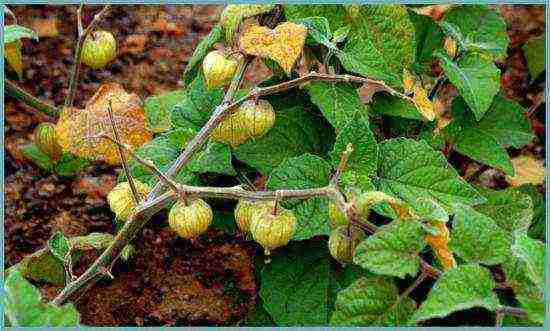
Physalis bushes are best tied up
Pinch the tops around mid-summer to maximize yields. You do not need to step-son and form physalis. Also, among the advantages of caring for him, it is worth noting resistance to drought and frost. Perennial winters well even at t - 30 ° C.
Fertilizing and feeding physalis
The first fertilization should be applied during the flowering period.Feed the plants a second time during fruit formation. Repeat the procedure after 15-20 days. It is good to use mineral fertilizers for physalis.

Physalis bloom
For example, you can prepare the following composition: superphosphate, ammonium nitrate and potassium salt. For 10 liters of water, 10-15 g of each component is enough. This volume is enough for 1 sq. m landing. It is better not to feed physalis with manure. Instead, take compost, humus, bird droppings or ash for fertilization.
Physalis propagation
The most common propagation of this perennial by seeds. They can be sown directly into open ground. But if you do not live in the southern region, it is better to pre-grow seedlings in the spring (in mid-March). Seedlings hatch at t from +15 ° C. When the third leaf appears on them, transplant each sprout into an insulated cup. The room temperature should not exceed +22 ° C
Advice. For the prevention of black leg (a fungal infection in which the seedlings wither and disappear), it is better to initially practice planting seeds not in a common, but in separate containers.
Watering is plentiful, but not too frequent. The sprouts should be rooted at the age of 40-50 days. They are planted in open ground when the threat of frost has passed, in May. Before planting, it will not be superfluous to harden the seedlings, carrying them out to the balcony or street for several days.

Physalis sprout
Physalis reproduces by self-seeding very actively, without any help. Alternatively, you can grow it from shoots that emerge from overwintered roots. Physalis needs regular rejuvenation, the procedure is both a care method and a breeding option. In the spring, excavate the rhizomes, separate them and plant them.
Diseases and pests
Like other members of the nightshade family, "earth cherry" most often suffers from the following diseases:
Mosaic... The leaves are deformed, yellow and green spots appear on them. Affected plants should be destroyed, hands and garden tools should be disinfected.
Late blight. It is characterized by the appearance of brown spots on the plants. To combat this fungus, it is possible to use chemicals. If physalis is already bearing fruit, the care is as follows: remove damaged fruits and leaves and disinfect.
Advice. Most often late blight is carried by potatoes. Having dug it out, do not plan to plant physalis and other nightshades in the same place.
Fusarium. Diseased plants begin to wilt before they even bear fruit. The infection lives in the soil for a long time. To prevent its reproduction, destroy the affected physalis along with the earthy clod, collect and dispose of the tops, disinfect the soil.
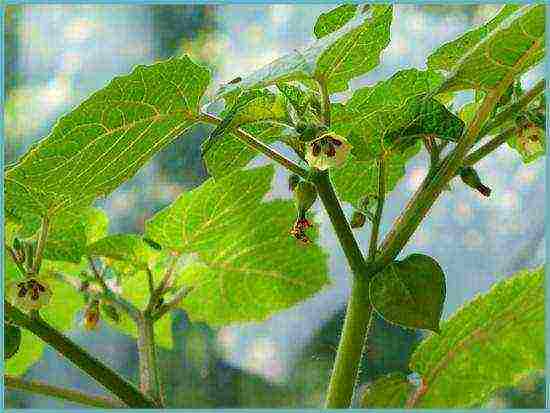
Physalis can be affected by many diseases - watch the condition of the bushes
Various rot: white, gray. The plant becomes covered with a whitish or smoky bloom, the fruits crack and rot or dry out. During the growing season, caring for physalis consists in processing with Bordeaux liquid, ridomil or copper oxychloride. For prevention, regularly remove affected leaves and plant debris.
When growing physalis, you will have to deal with such pests:
- Medvedka: gnaws at the roots. To destroy its nests, dig deep into the soil in the spring and autumn. In the summer, loosen it at least 15 cm. The aroma of marigolds planted nearby and watering the plants with bird droppings scare away insects.
- Aphids: tolerates late blight. Treat physalis with insecticides several times throughout the season.
- Wireworm: Damages the root system. When digging up the soil, add ash to it (the pest larvae do not like alkaline soil). Avoid the appearance and reproduction of wheatgrass in the area, which forms the basis of the wireworm's nutrition.
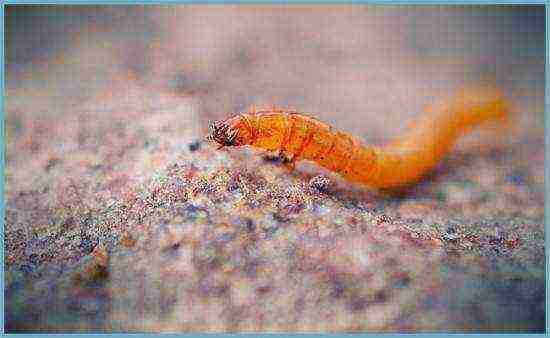
Wireworm
Physalis: combination with other plants
It is very difficult to find neighbors who would emphasize the beauty of a bright perennial better than he does it himself.It is often planted "for the future" to decorate winter landscapes. Orange lanterns, sprinkled with snow, enliven the half-empty gardens. In addition, growing physalis almost always involves its use in dry compositions.
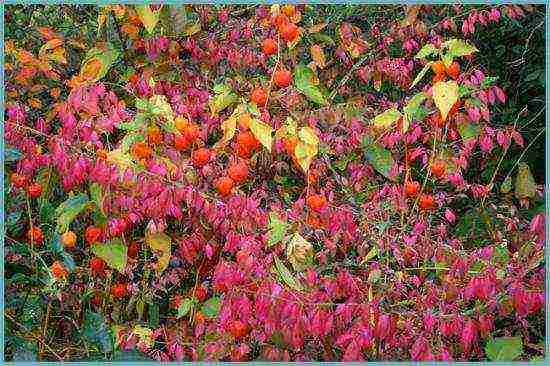
Physalis on a flower bed
In them, it is good in combination with kermek, lunaria, gypsophila, immortelle, spherical homphrene. Ensembles of “strawberry tomato” and pine needles look really festive and unusual. Physalis looks harmoniously surrounded by clusters of rowan or viburnum, as well as spikelets. And even a bunch of ordinary autumn leaves will turn this bright plant into a colorful bouquet.
Ideas for decorative compositions with physalis
With the help of these tips and your own imagination, you can easily decorate your apartment, house or garden plot:
- place the physalis in an openwork vase made of wood. Place a pumpkin next to it, making a funny face out of it (by gluing or cutting out eyes, mouth, etc. with a knife);
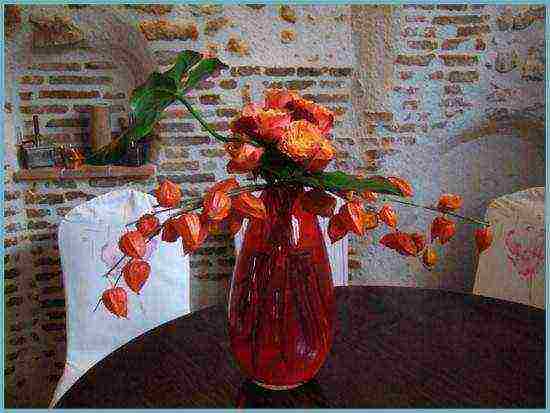
A bouquet with physalis can stand in your room all winter.
- place perennial sprigs in a beautiful flower watering can;
- you can put "lanterns" in a round aquarium without water or in another transparent container of the same shape;
- decorate walls or doors with wreaths. Sometimes ordinary photo frames are used for their basis;
- weave the twigs into a beautiful pigtail, decorating it with beads, ribbons, a small hat;
- make an original topiary (artificial "money tree");

Physalis decor
- string physalis boxes on stainless wire and braid a vase or container for cereals or seasonings with it - the kitchen will be transformed;
- for New Year's decoration at home, create a composition with candles and pine branches.
In summer, admire physalis in the open field, in winter, do floristry and feast on exotic "strawberry tomato" jam. The versatility of this wonderful plant deserves that you not only admire it in the photo, but also grow it yourself.
Physalis on a personal plot: video
Physalis: photo
